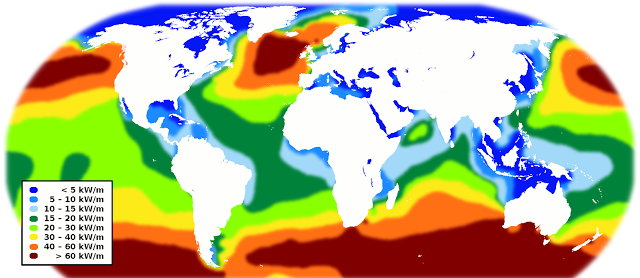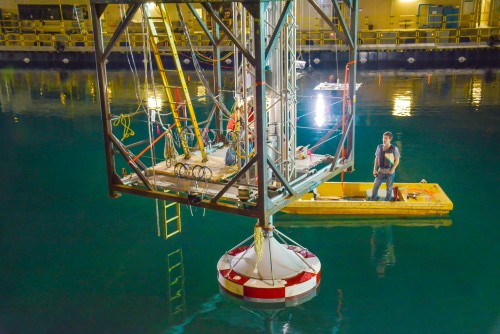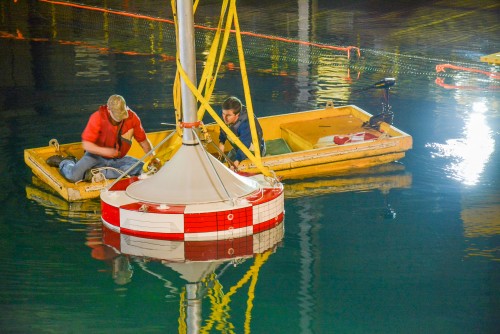

| Online: | |
| Visits: | |
| Stories: |

| Story Views | |
| Now: | |
| Last Hour: | |
| Last 24 Hours: | |
| Total: | |
Wave Energy Researchers Dive Deep To Advance Clean Energy Source
Credit: Wikimeida/Ingvald Straume
Now, engineers at Sandia National Laboratories are conducting the largest model-scale wave energy testing of its kind to improve the performance of wave-energy converters (WECs). The project is taking place at the U.S. Navy’s Maneuvering and Sea Keeping facility at the Carderock Division in Bethesda, Maryland, one of the largest wave tanks in the world at 360 feet long and 240 feet wide and able to hold 12 million gallons of water.
Sandia project leads Ryan Coe and Giorgio Bacelli spend long days in the dark wave tank, where minimal lighting reduces the growth of algae in the water. They are collecting data from their numerical modeling and experimental research to benefit wave energy technology with improved methodologies, strategic control systems design and testing practices for wave energy converters.
The largest model-scale wave energy testing of its kind is being performed by Sandia National Laboratories at the Navy’s Maneuvering and Sea Keeping facility at the Carderock Division in Bethesda, Maryland.
Coe said numerous initial studies estimate that improving control of the WECs’ generators can dramatically increase energy absorption by as much as 300 percent. Transitioning these simplified studies to more realistic large-scale devices is the challenge at hand.
To control the dynamics for better, faster results in the wave tank, Coe and Bacelli are using modeling and control methods that have been successful in other industries, such as in the aerospace industry.
“The systems we used have been around for a while, but strangely enough they had never been applied to wave energy converters,” Bacelli said. “So far, we know the techniques we are using are more efficient and cost-effective than existing methods. We are getting more information in a fraction of the time.
Sandia National Laboratories research engineers Ryan Coe and Giorgio Bacelli are collecting data at the U.S. Navy’s Maneuvering and Sea Keeping facility in Bethesda, Maryland, to optimize wave energy converter testing.
Sandia’s continuing wave energy project, Advanced WEC Dynamics and Controls, kicked off in 2013 and is funded by the Office of Energy Efficiency and Renewable Energy.
Innovations from Sandia’s Water Power Technologies Program advance our nation’s energy security by making renewable energy more economically feasible. Contributions include WEC-Sim, an open source code for modelling the performance of wave energy converters, extreme-conditions modeling and tidal and turbine modeling. Sandia researchers serve as advisers and judges for the Department of Energy’s Wave Energy Prize competition.
Contacts and sources:
Rebecca Brock
Sandia National Laboratories
Source:





